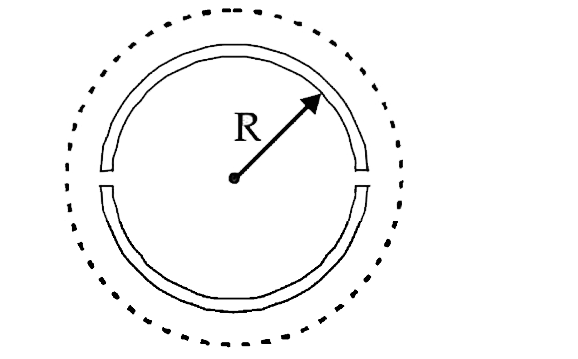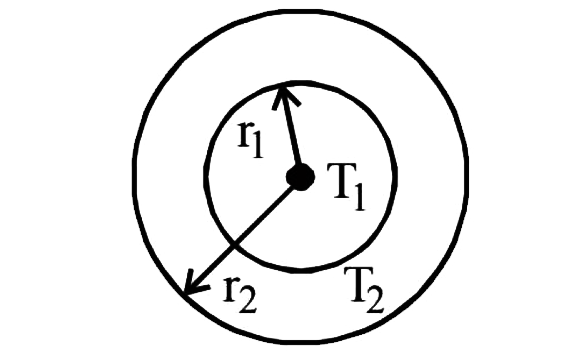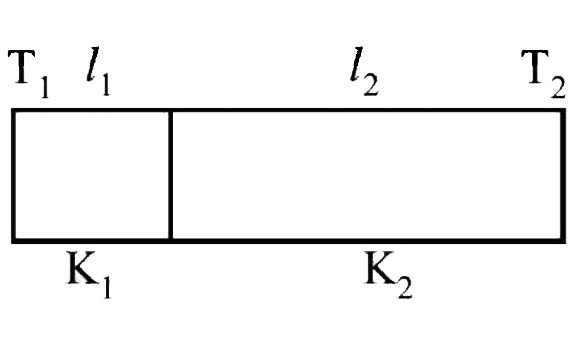Complete Solutions to COMPETITION FILE (OBJECTIVE TYPE QUESTION ((B) MULTIPLE CHOICE QUESTION FROM CPMPETITIVE EXAMINATION ) JEE MAIN AND OTHER STATE BOARDS FOR ENGINEERING ENTRANCE) of chapter THERMAL PROPERTIES OF MATTER of Class 11 book with complete answers and questions
| Class 11 | PHYSICS |
| Chapter | THERMAL PROPERTIES OF MATTER |
| MODERN PUBLICATION | COMPETITION FILE (OBJECTIVE TYPE QUESTION ((B) MULTIPLE CHOICE QUESTION FROM CPMPETITIVE EXAMINATION ) JEE MAIN AND OTHER STATE BOARDS FOR ENGINEERING ENTRANCE) |
| Number Of Questions | 19 |
| Academic Year | 2023-24 |
An aluminium sphere of `20cm` diameter is heated from `0^(@)C` to `100^(@)C`. Its volume changes by (given that the coefficient of linear expanison for aluminium `(alpha_(Al) = 23 xx 10^(-6//0)C)`
View SolutionA cylinder witih fixed capacity of 67.2 lit contains helium gas at STP. The amount of heat needed to raise the temperature of the gas by `20^(@)` C is ________ J. [Given that R = 8.31 `J mol^(-1) K^(-1)]`
View SolutionA wooden wheel of radius R is made of two semicircular part . The two parts are held together by a ring made of a metal strip of cross sectional area S and length L. L is slightly less than `2piR`. To fit the ring on the wheel, it is heated so that its temperature rises by `DeltaT`and it just steps over the wheel. As it cools down to surrounding temperature, it process the semicircle parts together. If the coefficient of linear expansion of the metal is `alpha`, and it Young's modulus is Y, the force that one part of the wheel applies on the other part is :

View SolutionThe pressure that has to be applied to the ends of a steel wire of length 10cm to keep its length constant when its temperature is raised by `100^@C` is : (For steel Young's modulus is `2xx10^11 Nm^-2` and coefficient of thermal expansion is `1.1xx10^-5K^_1`)
View SolutionThe figure shows a system of two concentric spheres of radii `r_1 and r_2` are kept at temperature `T_1 and T_2`, respectively. The radial rate of flow of heat in a substance between the two concentric spheres is proportional to

View SolutionA liquid in a beaker has temperature `theta(t)` at time t and `theta_0` is temperature of surroundings, then according to Newton's law of cooling the correct graph between `log_e( theta-theta_0)` and t is :
View SolutionA `"50 W m"^(-2)` energy density of sunlight is incident normally on the surface of a solar panel. Some part of incident energy `(25%)` is reflected from the surface and the rest is absorbed. The force exerted on `1m^(2)` surface area will be close to
`(c=3xx10^(8)ms^(-1))`
View SolutionThree rods of Copper, Brass and Steel are welded together to from a Y shaped structure. Area of cross-section of each rod `=4cm^2`. End of copper rod is maintained at `100^@C` where as ends of brass and steel are kept at `0^@C`. Lengths of the copper, brass and steel rods are 46, 13 and 12 cm respectively. The rods are thermally insulated from surroundings excepts at ends. Thermal conductivities of copper, brass and steel are 0.92, 0.26 and 0.12 CGS units respectively. Rate of heat flow through copper rod is :
View SolutionOne end of a thermally insulated rod is kept at a temperature `T_1` and the other at `T_2`. The rod is composed of two sections of length `l_1 and l_2` and thermal conductivities `K_1 and K_2` respectively. The temperature at the interface of the two section is

View SolutionA long metallic bar is carrying heat from one of its ends to the other end under steady-state. The variation of temperature `theta` along the length x of the bar from its hot end is best described by which of the following figure.
View SolutionWater of volume 2 litre in a container is heated with a coil of `1kW at 27^@C.` The lid of the container is open and energy dissipates at rate of `160J//s.` In how much time temperature will rise from `27^@C to 77^@C` Given specific heat of water is
`[4.2kJ//kg`]
View SolutionA hot body obeying Newton's law of cooling is cooling down from its peak value `80^@C` to an ambient temperature of `30^@C` . It takes 5 minutes in cooling down from `80^@C` to `40^@C`. How much time will it take to cool down from `62^@C` to `32^@C` ? (Given In 2 = 0.693, In 5 = 1.609)
View SolutionHot water cools from `60^@C` to `50^@C` in the first 10 min and to `42^@C` in the next 10 min. The temperature of the surrounding is
View Solutionblack colored solid sphere of radius "R" and mass "M" is inside a cavity with vacuum inside.The walls of the cavity are maintained at temperature `T_(0)` .The initial temperature of the sphere is `3T_(0)` .If the specific heat of the material of the sphere varies as `alpha T^(3)` per unit mass with the temperature of the sphere,where `alpha` is a constant,then the time taken for the sphere to cool down to temperature `2T_(0)` will be ( `sigma` Stefan Boltzmann constant)
View SolutionA simple pendulum made of bob of mass `m` and a metallic wire of negligible mass has time period `2 s` at `T = 0^(@)C`. If the temperature of the wire is increased and the corresponding change in its time period is plotted against its temperature, the resulting graph is a line of slope `S`. If the coefficient of linear expansion of metal is `alpha` then value of `S` is :
View SolutionA compressive force, F is applied at the two ends of a long thin steel rod. It is heated, simultaneously, such that its temeprature increass by `DeltaT`. The net change in its length is zero. Let l be the length of the rod, A its area of cross-section, Y its Young's modulus, and `alpha` its coefficient of linear expansion. Then, F is equal to
View SolutionA steel rail of length 5 m and area of cross section `40 cm^2` is prevented from expanding along its length while the temperature rises by `10^@C` . If coefficient of linear expansion and Young's modulus of steel are `1.2 xx 10^5K^1` and `2 xx 10^11 Nm^2` respectively, the force developed in the rail is approximately:
View SolutionIn an experiment a sphere of aluminium of mass 0.20 kg is heated upto `150^(@)`C. Immediately, it is put into water of volume 150 cc at `27^(@)C` kept in a calorimeter of water equivalent to 0.025 kg. Final temperature of the system is `40^(@)C`. The specific heat of aluminium is (take 4.2 Joule = 1 calorie)
View SolutionA copper ball of mass 100 gm is at a temperature T. It is dropped in a copper calorimeter of mass 100 gm, filled with 170 gm of water at room temperature. Subsequently, the temperature of the system is found to be `75^(@)C` . T is given by : (Given : room temperature = `30^(@)C`, specific heat of copper `=0.1 cal//gm^(@)C`)
View Solution
COMPETITION FILE (OBJECTIVE TYPE QUESTION ((B) MULTIPLE CHOICE QUESTION FROM CPMPETITIVE EXAMINATION ) JEE MAIN AND OTHER STATE BOARDS FOR ENGINEERING ENTRANCE) questions and complete solutions for chapter THERMAL PROPERTIES OF MATTER of MODERN PUBLISHERS PHYSICS (HINGLISH) of Class 11
All Exercises from MODERN PUBLICATION Class 11 PHYSICS THERMAL PROPERTIES OF MATTER
- CHAPTER PRACTICE TEST
- COMPETITION FILE (ASSERTION REASON TYPE QUESTION )
- COMPETITION FILE (EXEMPLAR PROBLEM OBJECTIVE TYPE QUESTION (MULTIPLE CHOICE QUESTION TYPE - I )
- COMPETITION FILE (EXEMPLAR PROBLEM OBJECTIVE TYPE QUESTION (MULTIPLE CHOICE QUESTION TYPE - II )
- COMPETITION FILE (EXEMPLAR PROBLEM SUBJECTIVE QUESTION (SHORT ANSWER TYPE QUESTION)
- COMPETITION FILE (EXEMPLAR PROBLEM SUBJECTIVE QUESTION (VERY SHORT ANSWER TYPE QUESTION)
- COMPETITION FILE (INTEGER TYPE QUESTION )
- COMPETITION FILE (MATRIX MATCH TYPE QUESTION )
- COMPETITION FILE (OBJECTIVE TYPE QUESTION ((A) MULTIPLE CHOICE QUESTION WITH ONLY ONE CORRECT ANSWER))
- COMPETITION FILE (OBJECTIVE TYPE QUESTION ((B) MULTIPLE CHOICE QUESTION FROM CPMPETITIVE EXAMINATION ) AIMPMT/NEET AND OTHER STATE BOARDS FOR MEDICAL ENTRANCE)
- COMPETITION FILE (OBJECTIVE TYPE QUESTION ((B) MULTIPLE CHOICE QUESTION FROM CPMPETITIVE EXAMINATION ) JEE ADVANCED FOR IIT ENTRANCE )
- COMPETITION FILE (OBJECTIVE TYPE QUESTION ((B) MULTIPLE CHOICE QUESTION FROM CPMPETITIVE EXAMINATION ) JEE MAIN AND OTHER STATE BOARDS FOR ENGINEERING ENTRANCE)
- COMPETITION FILE (OBJECTIVE TYPE QUESTION ((C ) MULTIPLE CHOICE QUESTION WITH MORE THAN ONE CORRECT ANSWER)
- COMPETITION FILE (OBJECTIVE TYPE QUESTION ((D ) MULTIPLE CHOICE QUESTION BASED ON A GIVEN PASSAGE/COMPREHENSION )
- CONCEPTUAL QUESTIONS
- HIGH ORDER THINKING SKILLS AND ADVANCED LEVEL
- NCERT FILE (TEXTBOOK EXERCISE)
- PRACTICE PROBLEM
- REVISION EXERCISE (ADDITIONAL QUESTION)
- REVISION EXERCISE (FILL IN THE BLANKS)
- REVISION EXERCISE (LONG ANSWER QUESTION)
- REVISION EXERCISE (NUMERICAL PROBLEM)
- REVISION EXERCISE (SHORT ANSWER QUESTION)
- REVISION EXERCISE (VERY SHORT ANSWER QUESTION)
- SOLVED EXAMPLE
- TOUGH AND TRICKY PROBLEM